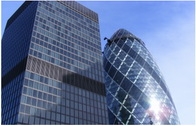Advertisement
Survey Finds Stricter Underwriting Standards Stifling Commercial Market Recovery

Although commercial real estate markets showed signs of recovery in 2011, commercial lending standards have tightened in the past year for small businesses and scuttled a major portion of contracted transactions for smaller properties, according to the annual Commercial Real Estate Lending Survey conducted by the National Association of Realtors (NAR). According to Real Capital Analytics, more than 13,000 major properties valued at $2.5 million or higher traded hands in 2011. Sales volume increased 51 percent over 2010 to $205.8 billion, with the lion's share of lending funds coming from big banks. Other funding sources include insurance companies and institutional investors. By contrast, the NAR survey shows that small business transactions rely heavily on smaller regional and local banks, and small private investors, for lending capital.
"This is very much a tale of two markets. There have been notable improvements in capital for large commercial transactions valued at $2.5 million or higher, but there remain significant challenges for small business," said Lawrence Yun, NAR chief economist. "Our Realtor members typically are involved in helping commercial clients with purchases under $2 million, where a lack of capital has caused two out of three respondents to report deals have fallen through. Given that most jobs are created through small business, the lack of capital is hurting small businesses and the overall economic recovery."
Respondents indicated that nearly 30 percent of smaller commercial properties are purchased with cash, reflecting the tight credit environment, and some are seller financed. "When credit is tight, cash is king," Yun added.
The most common types of property transactions referenced in the survey were multifamily, land, warehouse, suburban office and retail strip centers. Other property types include industrial flex space, central business district office, freestanding retail, and restaurants.
Realtors report the system is clogged with property that must be sold or refinanced, which is significantly impacting the recovery. Long-time investors who never had a problem getting a loan in the past are now being declined.
More than half of respondents say lending is just as stringent as a year ago, while 23 percent say it is more stringent; 20 percent say it is less stringent but not near historical averages. Members also complained about banks being over-regulated, and refinancing being denied due to stringent internal lender underwriting requirements or low appraisal valuations.
Thirty-six percent of Realtors said clients used the Small Business Administration commercial refinance program, but of those who didn't, 45 percent said it was due to burdensome application and reporting requirements.
The Commercial Real Estate 2012 Lending Survey is published by the NAR Research Division for the commercial community. In April 2012, a random sample of 32,459 Realtors with an interest in commercial real estate was invited to complete an online survey. A total of 474 responses were received, for an overall response rate of 1.46 percent.
About the author





